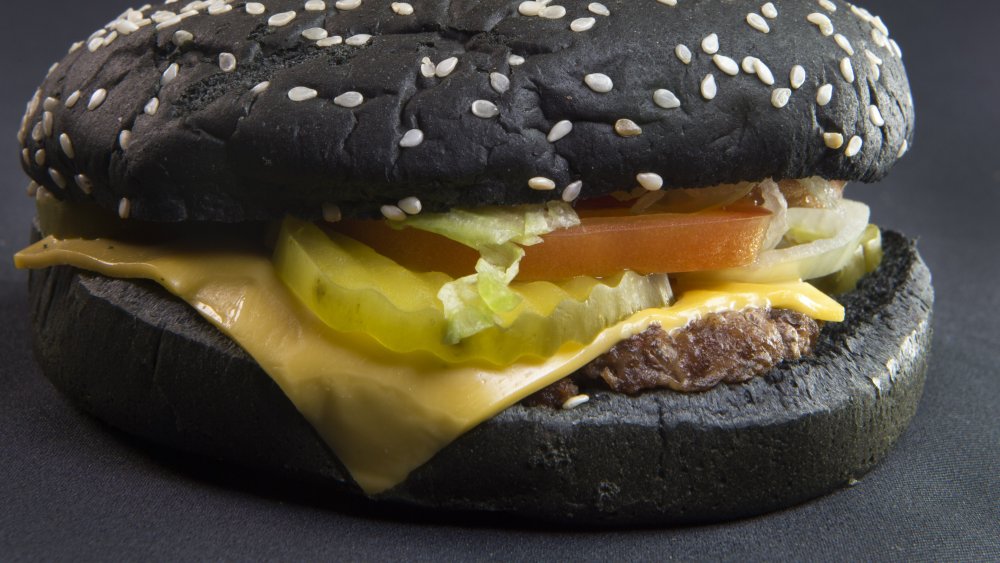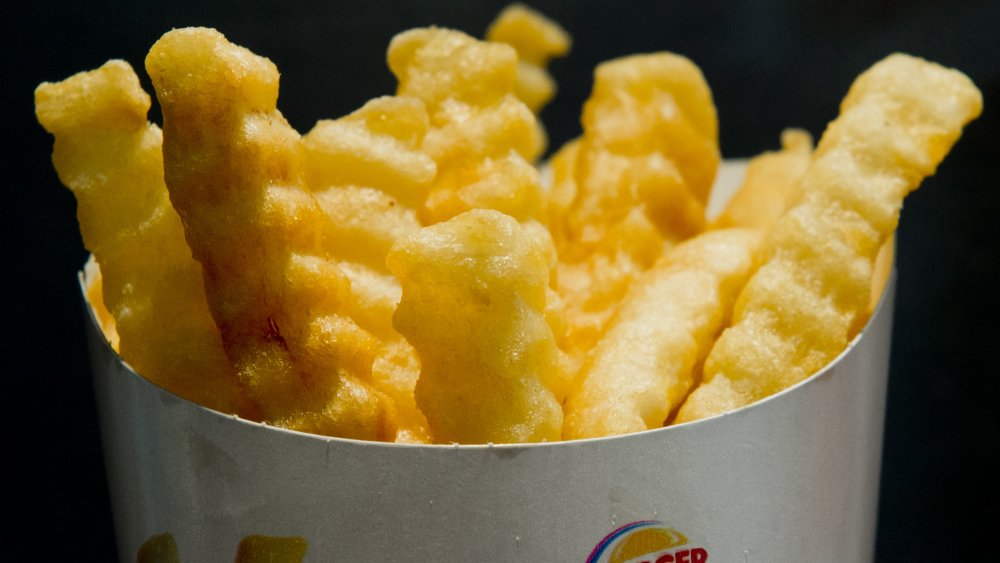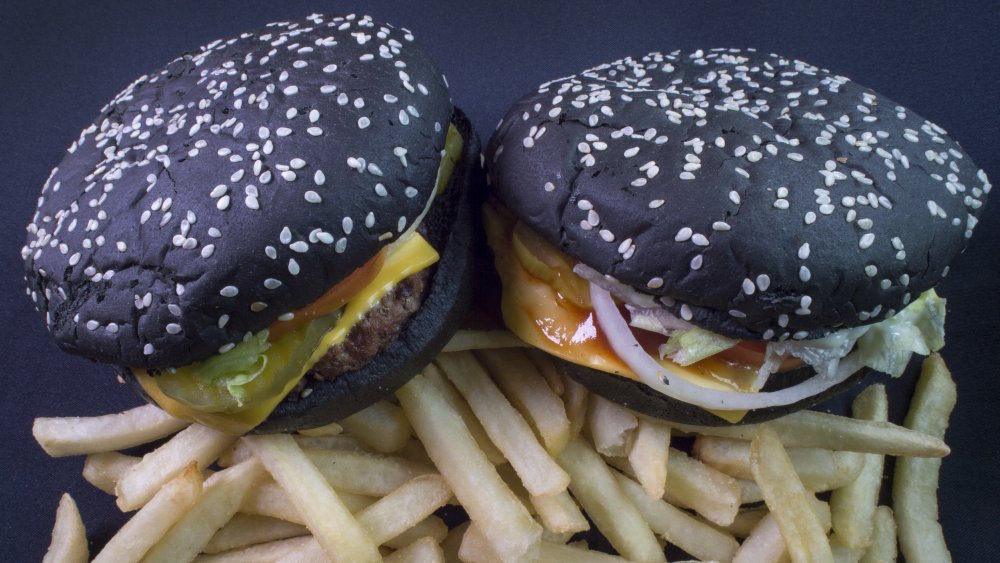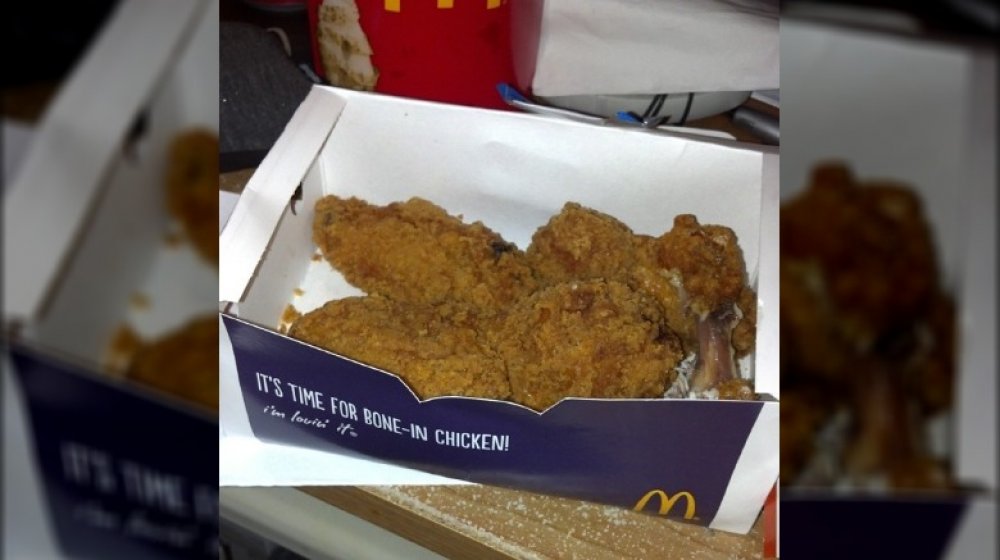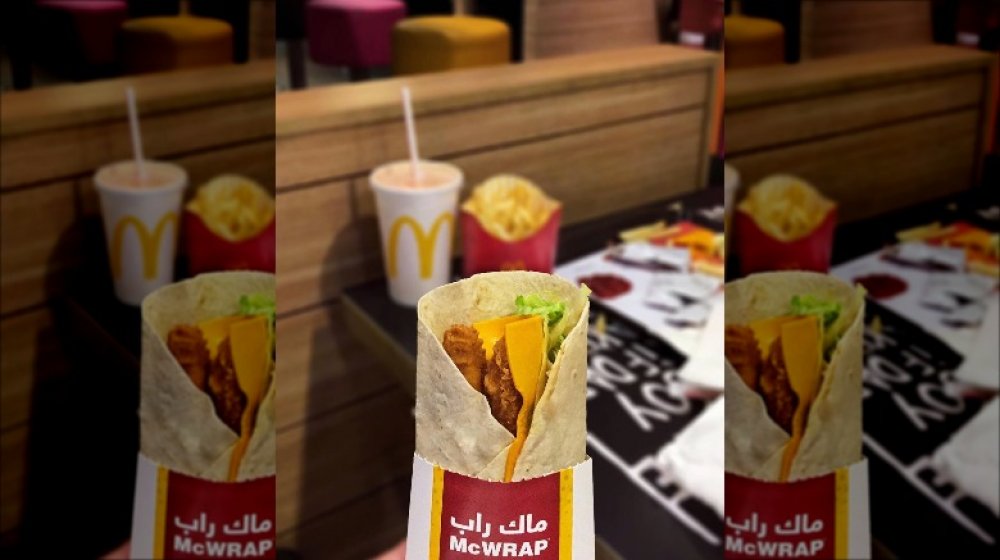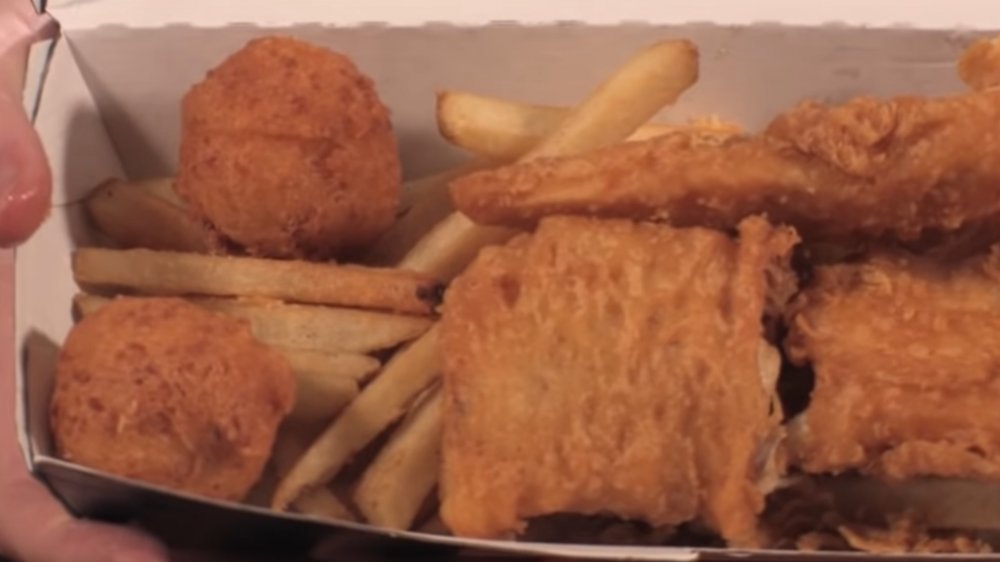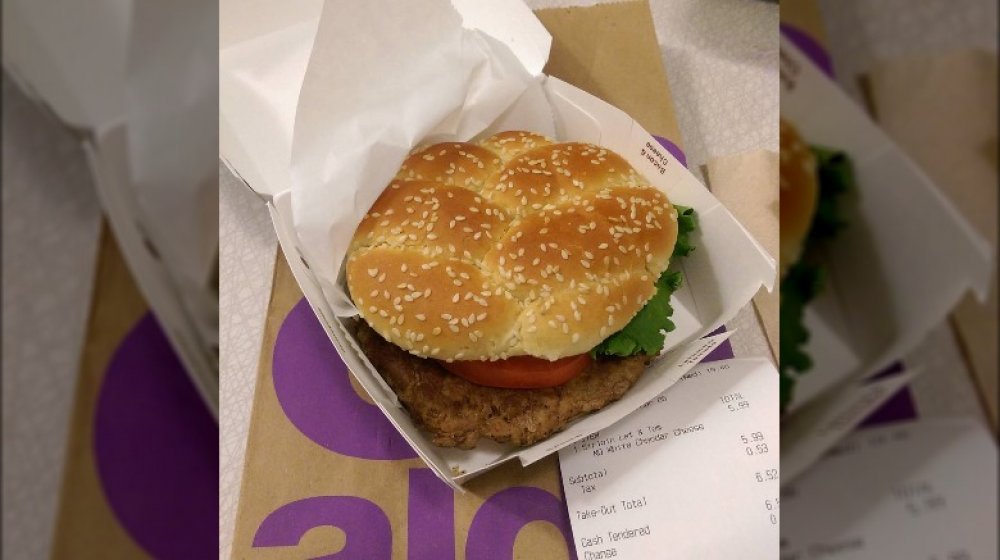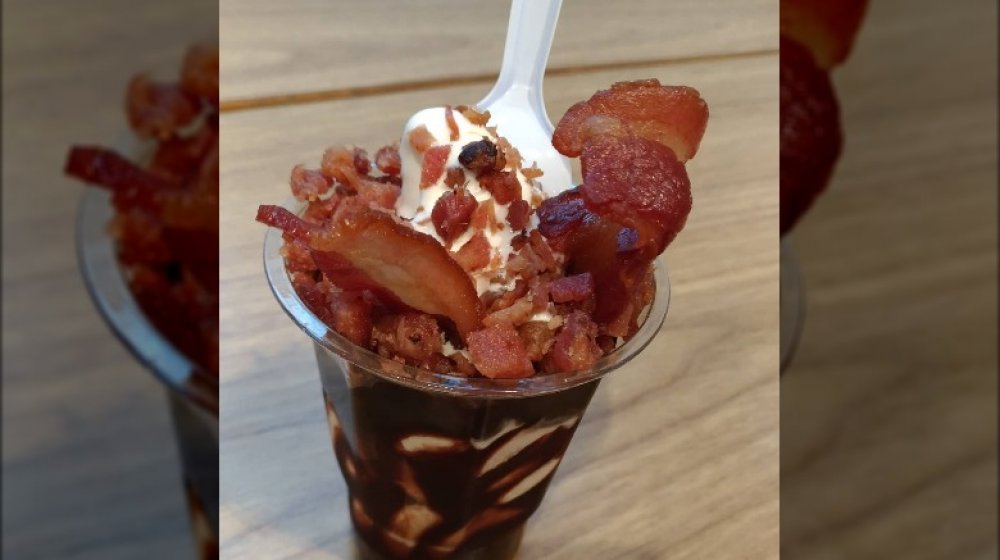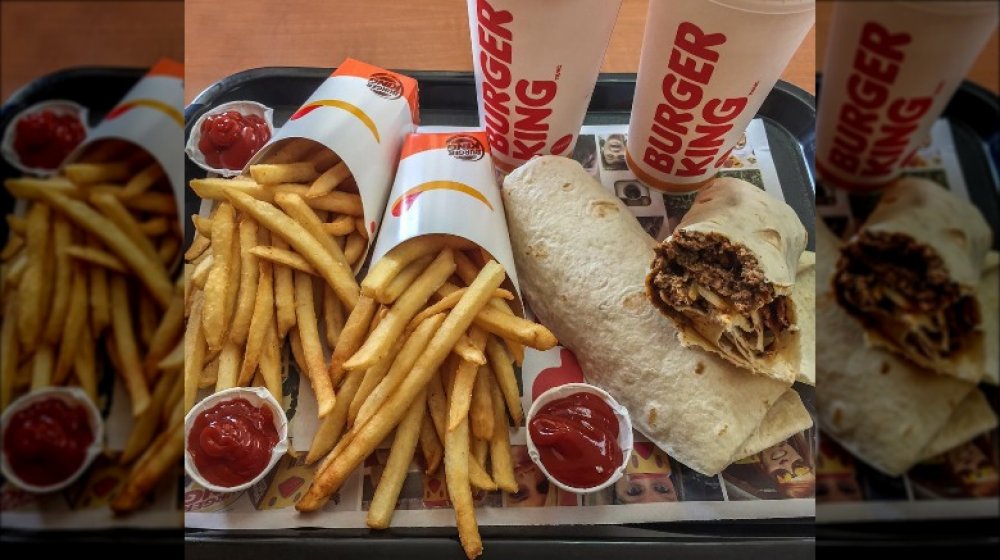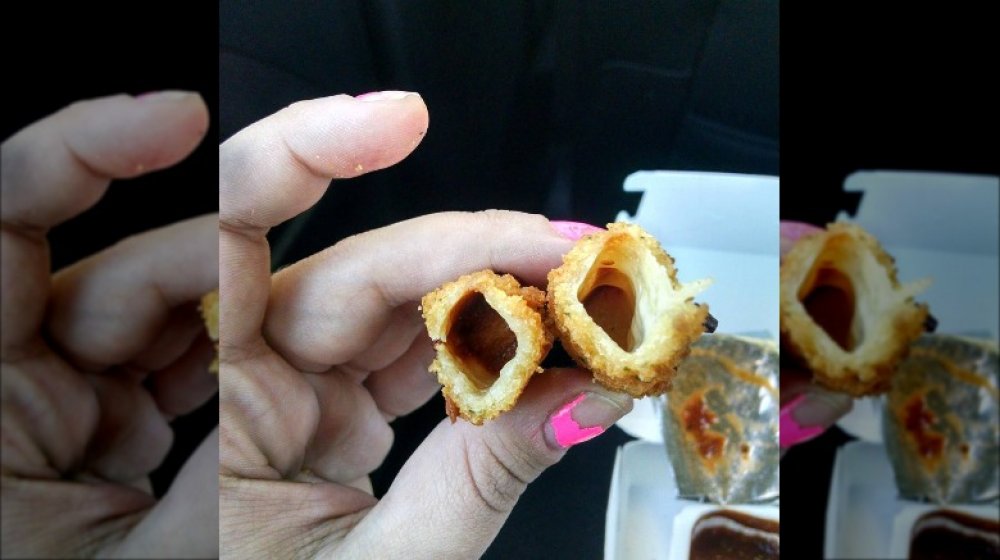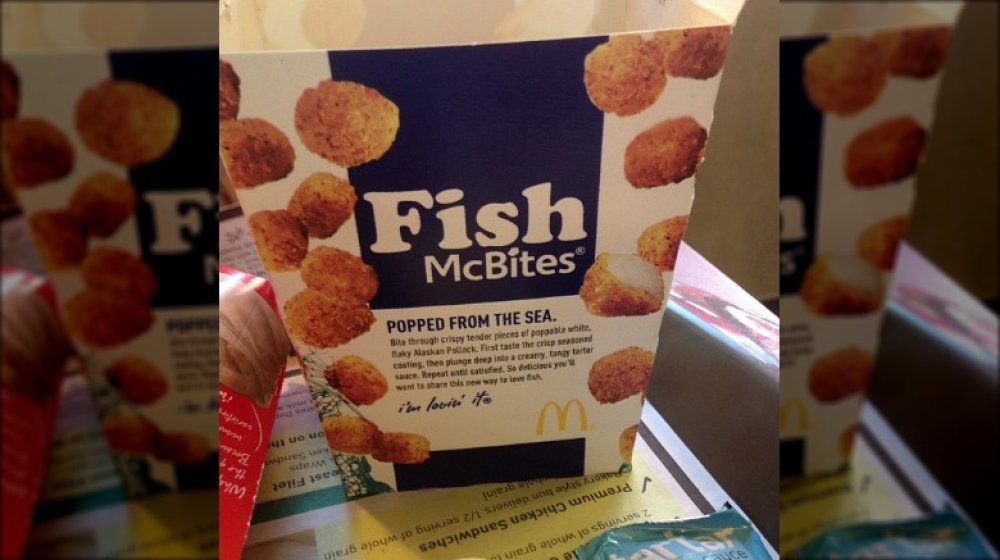The Biggest Fast Food Failures Of The Past Decade
Well, it's been a hell of a decade. For many of us, the last ten years have felt like a hundred, what with all the cataclysmic social, political, and cultural changes the world has been put through. For the fast food industry, however, the 2010s have felt a little like business as usual. McDonald's is still flipping burgers, KFC is still frying chicken, and Pizza Hut is still pizza-ing pizzas.
But that doesn't mean the titans of fast food have had a flawless decade, either. In fact, some of the biggest names in the industry have sullied their own good names over the last ten years by releasing some of the most bizarre, disappointing, and downright idiotic menu items ever known to mankind. From Whopper flops to not-so-mighty wings, to fried fiascos and beyond, here are the biggest fast food failures of the last decade. You can only hope they've learned their lesson.
Burger King's Satisfries
In 2013, Burger King decided to take a shot at dethroning McDonald's to become the king of fast food french fries. So they invented the Satisfries, a lower-calorie alternative to the fries the chain usually offered. The whole shtick behind these particular fries was that they were made with a kind of batter that absorbs less oil, meaning they ended up having 20 percent fewer calories than regular Burger King fries.
Unfortunately, the Satisfries failed to satisfy Burger King customers. In 2014, less than a year after the menu item debuted, 7,500 American Burger King franchises were given the option of continuing or ceasing to offer Satisfries. Only 2,500 decided to continue. At those 2,500, they were gradually phased out after remaining as a limited-time offer. So what went wrong?
Public perception was an issue, of course. Nobody thinks of Burger King as being particularly healthy, and nobody goes to Burger King for their health either — so healthier options such as the Satisfries were unlikely to capture the imagination of customers.
There's a good chance Americans' predilection against potatoes and carbs had an effect, too. According to the Wall Street Journal, in 2012 the total annual consumption of potatoes by Americans had fallen 25 percent since 1996. In an environment like that, any new potato-based menu item — even a healthier one — is likely to struggle.
Burger King's Halloween Whopper
Everyone knows that one sure-fire way of making fast food more appetizing is to make it black. After all, nothing's more delicious than coal, right? So how could the Halloween Whopper possibly fail?
Quite easily, as it turns out. Burger King's Halloween Whopper was released in the fall (duh) of 2016, and, other than its alarming black bun and special A1-Steak sauce, was no different to any other Whopper. In essence, it was a gag item, and not a bad one, at that. You can't say it's not spooky, can you?
Unfortunately, the Halloween Whopper came with a peculiar side-effect — one which quickly turned it into one of fast food's most notorious flops. You see, the Halloween Whopper turned your poop green. "Almost a grass green," according to Mike Wickliff of Indianapolis. "I had been warned. Somebody on Twitter was talking about it and I thought, 'Well, now I have to go try it!'"
Pamela Reilly, a naturopathic doctor and nutrition counselor, told The Indianapolis Star (via USA TODAY) that she believed this was because Burger King was using a concentrated form of A1 sauce in order to properly dye the buns. And although Reilly insisted that this strange miscoloring was nothing to worry about, the Halloween Whopper's weird little quirk managed to easily overshadow the release of the actual burger — which quickly became the butt of a thousand internet jokes.
McDonald's Mighty Wings
Even a chain as mighty as McDonald's isn't immune to a mistake or two, and nothing illustrates that better than the disaster that was Mighty Wings.
These wings hit McDonald's stores back in 2013 (after an unsuccessful run from the 1990s to 2003), as part of a marketing campaign that sought to use an association with the NFL to tempt football fans. Around the time of their release, a McDonald's spokesperson said: "Given the natural tie between wings and football, the NFL is the perfect partner to help promote our new Mighty Wings."
Things were looking good. To prepare for the launch of the Mighty Wings, McDonald's even purchased 50 million pounds of chicken wings — and then it all went wrong. As of the end of 2013, 10 million pounds of those same wings remained, after the Mighty Wings suffered from hugely disappointing sales. According to AdAge, the wings failed because they were both too spicy and — at $2.99 for three wings — too pricey.
"One dollar per wing was still not considered to be the most competitive in the current environment," said McDonald's CEO Don Thompson on the company's third-quarter earnings call. "The other thing we saw, and it's a very slight modification, the flavor profile is slightly spicy for some consumers."
Mighty Wings returned in 2016 for a limited time in Atlanta, but haven't been seen since — so don't expect to see them any time soon.
Pizza Hut's Flavor of Now menu
Back in 2014, Pizza Hut decided to up its game and move into the world of gourmet pizza. The chain's new 'Flavor of Now' menu included 10 new crust flavors, such as Honey Sriracha, Salted Pretzel, and Ginger Boom Boom (no, we don't know either). It also featured new "premium" ingredients, as well as some new drizzles, new 'Skinny Slice' pizzas, and a range of new sauces.
The launch also came with a new company logo, a new box, and new uniforms for the staff. "We couldn't feel better about the direction we're going and the long-term impact these changes will have on our business," the company wrote on its blog.
In 2015, Pizza Hut's largest franchisee reported that sales at the company's Pizza Hut locations had fallen 3.5 percent in the fourth quarter. All in all, the company generated a net loss of $100,000 for the quarter — and it blamed the 'Flavor of Now' brand for the decline.
In a statement, CEO of NPC International, Jim Schwartz, said: "While we continue to see a significant increase in our digital business mix, the new positioning is not yet yielding the improved sales results that we were anticipating."
"The results have been mixed since we launched that program," Pizza Hut CEO David Gibbs later said. "We had a belief that we would be able to charge a real premium for these new flavors and ingredients, and the marketplace told us we couldn't do that. We needed more value."
McDonald's McWraps
The McWrap was introduced to McDonald's menus in 2013, as a means of appealing to a younger, more health-conscious customer base than the chain was used to. These wraps were filled with vegetables and came with a lower calorie count than the burgers for which McDonald's is so famous.
Internally, McDonald's execs hoped that the McWrap would make for a fitting rival to Subway's sandwiches. Unfortunately, they didn't last long. Analysts blamed the McWrap for a 4 percent fall in U.S. sales in 2015, and the item was discontinued in 2016.
The failure of the McWrap was down to a number of reasons. For one, McDonald's struggled to sell the McWrap to its target audience — millennials — because of the public perception that the chain simply offers junk food. As a result, an off-brand "healthy option" just wasn't enough to appeal to that audience; the exact same trouble the Satisfries had.
What's more, the McWrap managed to put off the customers McDonald's already had, too. Because a McWrap took 60 seconds to create on average (while a burger takes around 10), the item contributed to a build-up in drive-thru wait times that had only been worsening over recent years.
"What (customers are) waiting for is a better hamburger from McDonald's, not a wrap," one former McDonald's executive told The New York Times.
Long John Silver's Big Catch Meal
Let's run through the Big Catch Meal, shall we?
Released by Long John Silver's, the dish consisted of battered haddock with two sides; a choice of green beans, hush puppies, onion rings, coleslaw, French fries, rice, or corn. Doesn't sound too bad, right? It's just fish and chips!
Well, in 2013, the Big Catch Meal was deemed the worst restaurant meal in America by the Center for Science and Public Interest. The CSPI performed laboratory tests on the menu item and found that the version that included the hush puppies and onion rings came with 33 grams of trans fat, 19 grams of saturated fat, and an absolutely insane 3,700 milligrams of sodium.
For what it's worth, the American Heart Association suggests that people consume no more than two grams of trans fat per day. The Big Catch Meal contained two whole weeks' worth of the stuff.
"Long John Silver's Big Catch meal deserves to be buried 20,000 leagues under the sea," said CSPI executive director Michael F. Jacobson. "This company is taking perfectly healthy fish—and entombing it in a thick crust of batter and partially hydrogenated oil. The result? A heart attack on a hook. Instead of the Big Catch, I'd call it America's Deadliest Catch."
On August 28th 2013, Long John Silver's announced that it would discontinue the Big Catch Meal. It was not mourned.
McDonald's Sirloin Third Pounder
At first glance, nothing seems outwardly offensive about the idea of a third-pound burger. It's just a big burger, right?
Well, as A&W discovered in the 1980s, things aren't always that simple. The Sirloin Third Pounder was meant to compete with the McDonald's Quarter Pounder, with the idea being that customers would get a bigger burger for more value. But the Sirloin Third Pounder failed to sell, and A&W had no idea why. After running some more focus groups, they finally discovered the problem. In his book Threshold Resistance, ex-owner of A&W Alfred Taubman explains the problem was that people didn't understand fractions.
"More than half of the participants in the Yankelovich focus groups questioned the price of our burger," he writes. "'Why,' they asked, 'should we pay the same amount for a third of a pound of meat as we do for a quarter-pound of meat at McDonald's? You're overcharging us.' Honestly. People thought a third of a pound was less than a quarter of a pound. After all, three is less than four!"
And that was the end of that... or so it seemed. In 2015, McDonald's themselves decided to release a burger of a similar size — and, having apparently learned nothing from A&W's '80s nightmare, even gave it the exact same name.
It was gone within a year. It was introduced as limited time item, but didn't make enough waves to stay around longer or ever make a menu comeback. Seriously... what did they expect?
Burger King's Bacon Sundae
Yeah, you read that right. The Bacon Sundae. This particular travesty against the laws of nature came courtesy of Burger King, who decided in 2012 that all the good burger ideas had been taken so their time was best invested trying to ruin as many things as possible in one fell swoop. The Bacon Sundae cost $2.49 and was available at only a few Burger King locations in Nashville before launching nationwide, but it quickly made a splash — and not in a good way.
"The effect is like eating a sundae and some bacon," The Daily Beast wrote, "not a bacon sundae. [...] When we drove away from the parking lot that night, I left behind my desire that the Burger King Bacon Sundae would be a game charger. All I took with me was a palate encrusted with salt and 510 calories."
In their own review, Brand Eating wrote: "It ended up just tasting a little weird with cold sweetness to start, tailing off into a strong salt finish; a little bit like disappointment."
Esquire wasn't impressed either. Their reporter wrote: "Friends, I'm sorry to report that the Bacon Sundae is basically just your standard Burger King sundae with a little bacon on top."
Because it was a limited-time offer, the Bacon Sundae was never meant to last — so it obviously doesn't exist today. But there is still a way you can order one... if you really, really want to.
Burger King's Whopperito
Just like the Bacon Sundae, the Whopperito is exactly what it sounds like. It's a Whopper crossed with a burrito.
Released in 2016, this Burger King menu item came with beef, lettuce, tomatoes, onions, pickles, and queso sauce, wrapped up in a tortilla and sold for $2.99. Mass Live described it at the time as existing "in a melancholy twilight between two types of food. It doesn't taste as good as a burger, and it isn't a particularly good burrito."
Even the release of the Whopperito was surrounded by ambivalence. Alex Macedo, the company's North American president, had little more to say than "It's certainly one of the first times that we've tapped into the Tex-Mex category," while the company's press release seemed to admit that it was only released nationwide because of "media attention" and "social media requests."
VICE's taste test was similarly underwhelming. "The Whopperitos were created," they wrote. "I have consumed and then written about them. The circle is complete. It is done. Content: created. Whopperito desire: sated."
All in all, the Whopperito turned out to be a weird idea executed competently — the problem was, nobody seemed to give a damn.
McDonald's Mozzarella Sticks
Okay, so you'd think that McDonald's introducing their Mozzarella Sticks item in early 2016 would turn out simply enough, right? It seems like a simple enough dish, people love them, and they're not overtly off-brand. Unfortunately, things went very wrong very quickly for the chain when it started to become clear that many of these sticks were being served without any cheese inside them.
Just a few months after their debut, a California man sued McDonald's for at least $5 million on behalf of all the customers across 40 states who had received the sticks without any cheese. The suit alleged that, in claiming the sticks contained 100 percent mozzarella, McDonald's was falsely advertising. The company insisted that a "rollout glitch" had caused this to happen, and that the mozzarella had melted out somehow during cooking.
Naturally, McDonald's fans took to social media to voice their anger. "Where's the cheese?😳" one Twitter user wrote. "@McDonalds maybe stick to burgers & fries. New mozzarella sticks were a let down. #disappointed"
Another tweeted: "Craving mozzarella sticks. Excited that @McDonalds has them! Just to get home to have hollow breading :( #sad"
Finally, one Twitter user said: "PSA: Don't ever buy mozzarella sticks from McDonald's."
McDonald's Fish McBites
One last flub for McDonald's, here, with the chain's 2012 launch of Fish McBites — which, in case you didn't know, are basically fishy McNuggets.
Described by McDonald's as "poppable pieces of white, flaky Alaskan pollock," these nuggets were made from a fish that Kotaku rightly describe as being more commonly used for "fish sticks, fish balls and cat food." According to their review, "biting into one unaided results in a brief hint of the sea, the bitter taste of burnt grease and then nothing but texture."
Brand Eating was a little more generous with their review. The publication wrote that "if you like fish, these might be worth a try."
Still, some good graces from the occasional reviewer did nothing to save the Fish McBites. Shortly after the item debuted, Forbes reported that the item had done nothing to win over customers; instead, the company's profits "floundered" (their pun, not ours). According to Forbes, McDonald's had foolishly attempted to increase sales by offering "inexpensive food" rather than the "emotional engagement" they should have been pursuing.
Still, at least someone felt emotionally engaged with the Fish McBites; enough at least to start a petition in 2019 calling on McDonald's to re-release the item. At time of writing, they hadn't yet met their goal of 200 signatures.
So, yeah. RIP, Fish McBites. We hardly knew ya.
